|
WWII German M-1942 DAK Helmet -
This is a German military helmet. As issued during World War Two.
The German Afrika Korps (Deutsches Afrikakorps, DAK) was the German expeditionary force in Libya
and Tunisia during the North African Campaign of World War II. The force was kept as a distinct
formation and became the main German contribution to Panzer Army Africa which evolved into the
German-Italian Panzer Army (Deutsch-Italienische Panzerarmee) and Army Group Africa.
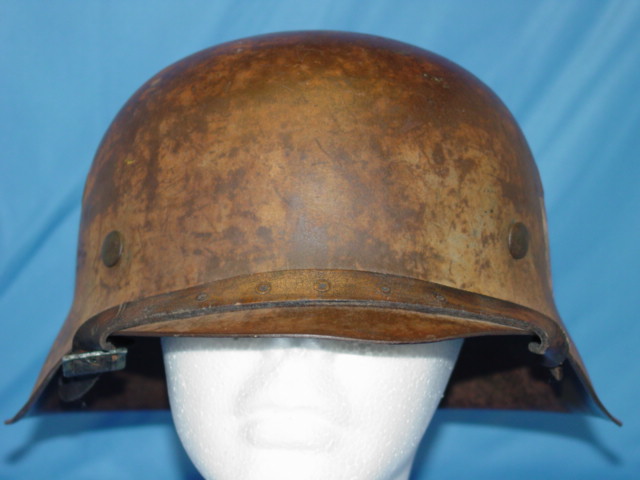
The helmet featured here is a DAK helmet. M-1942 style. The shell retains most of the original
paint, which is a very interesting combination of yellow and khaki. Single Army eagle decal
applied to one side.
The liner is present. Consisting of eight tabs pointing towards the crown. A string would be
employed to secure them together. The string is missing in this example. A brown leather chin
strap is draped across the front lip.

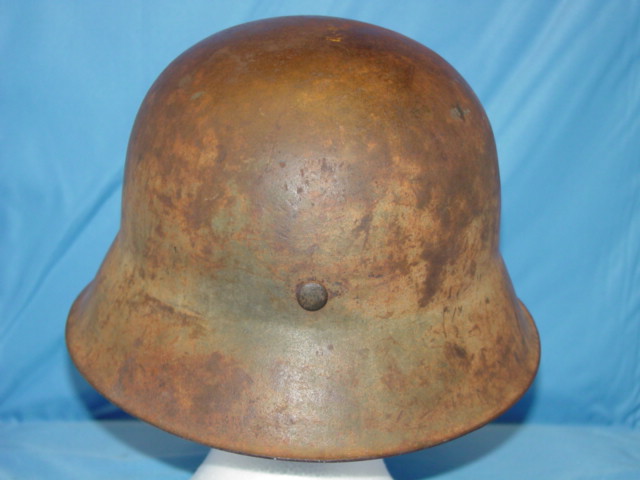
|
The modern German helmet saw its birth during World War One. Its design was so advanced
for the time that the German government saw it fit for the same basic design to be re-employed
during World War Two.
The German helmet of World Wat Two has become one of the most recognizable silhouttes of war.
The helmetss of the Third Reich came in a variety of designs. There were approximatelly
9 different types developed. Even the non-military helmets often displayed the
swastika as a means to show support of the Nazi party. The helmet was constructed of a
combination of metal and leather.
|
|
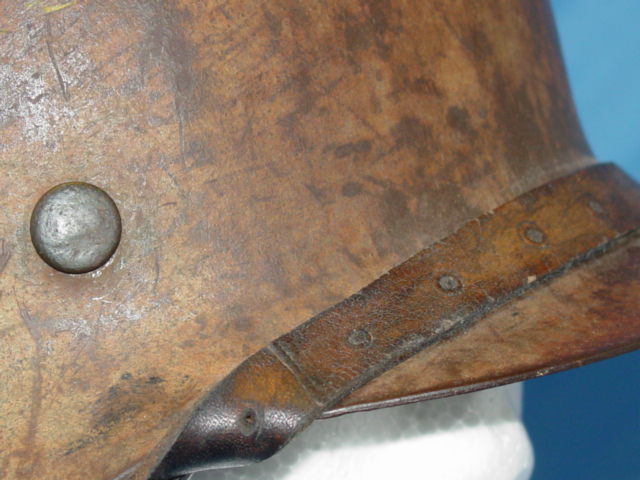
The liner is secured to the helmet via the use of an aluminum ring which is attached to the
body of the helmet by rivets. The rivets are visible from the outside. In addition to that
there are two vent holes near the crown of the dome. This feature provided air circulation
in instances when the helmet was being worn.
The same aluminum ring had a set of "D" ring loops. This is where the chin strap was looped
through and secured. A metal buckle was employed to adjust the chin strap.
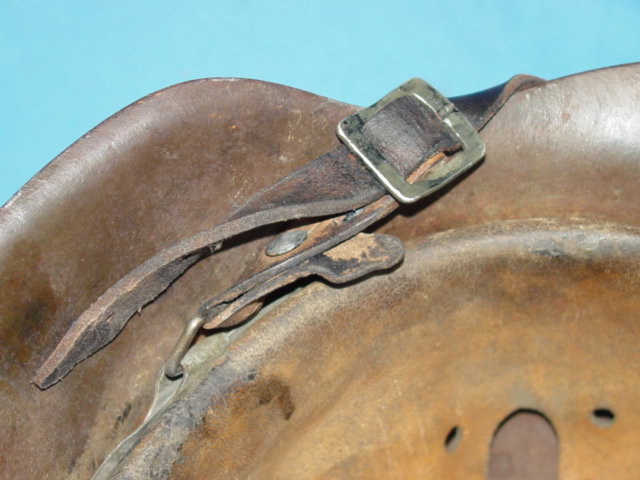
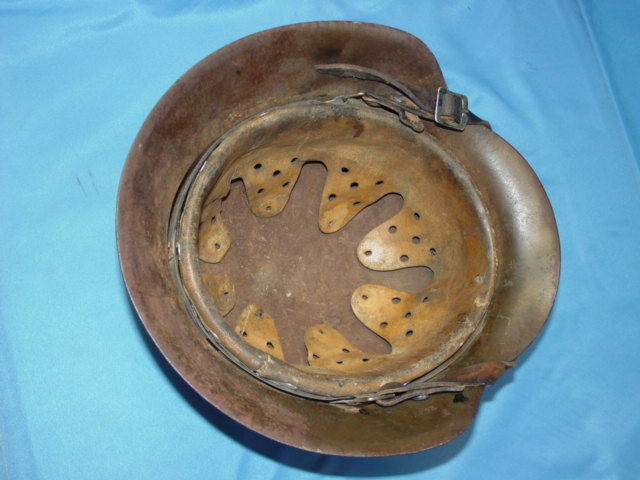

Some of the helmets have markings stamped in the inside of the rim. The markings provide information
such as the serial number, name of manufacturer, helmet size, etc. A
markings guide has been provided to help
the collector and enthusiast gain a better understanding of their meaning. It is important to
note that not all possibilities of markings are covered in that section.
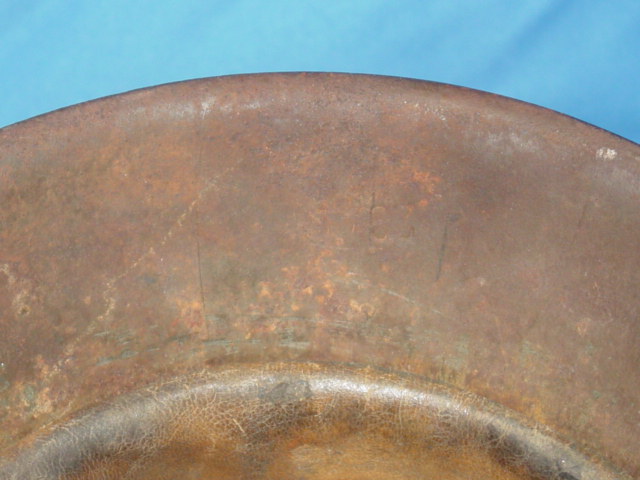


| 






